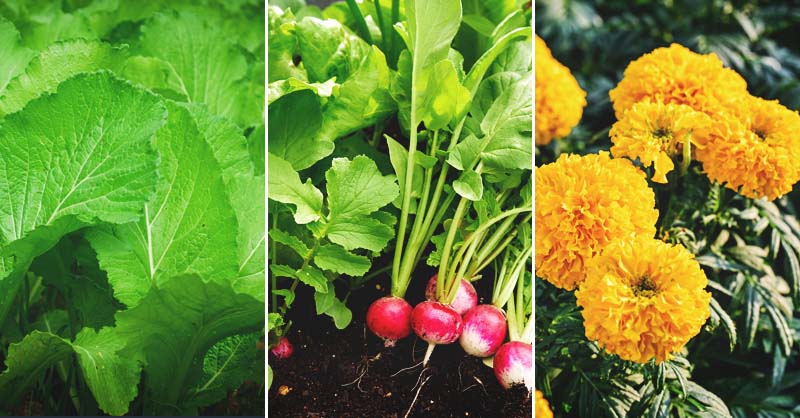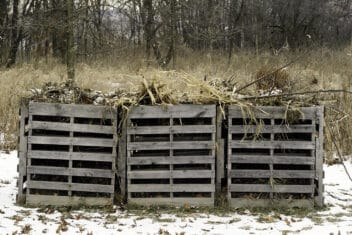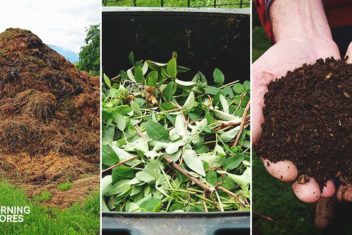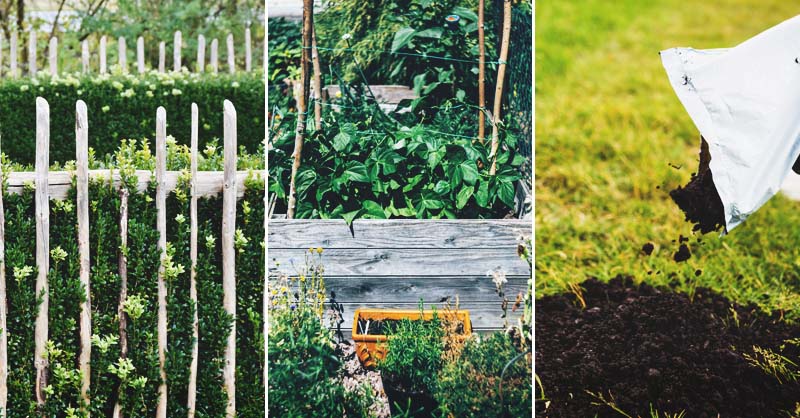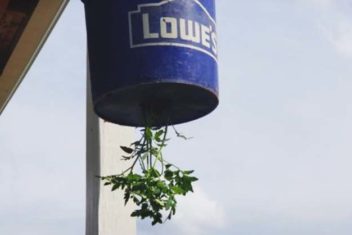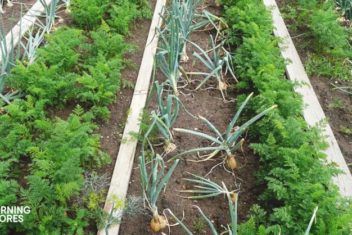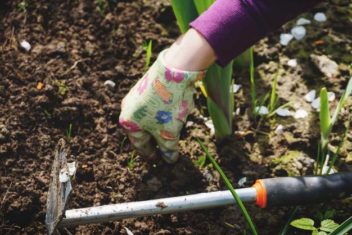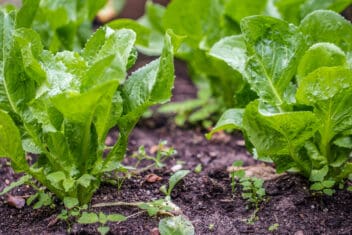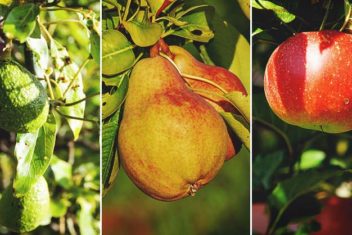When I first heard the term trap crop (sometimes called decoy crop or sacrificial crop), I was a little skeptical. Then I experimented with them and was pleasantly surprised with the results. My harvests were more abundant, and I was able to make my vegetable garden predominantly chemical-free.
The idea of using one crop to divert the attention of pests away from your main crop is quite ingenious. It saves a lot of your produce from being eaten and reduces the incidence of disease, since there are fewer pests to spread fungus and bacteria around. As a result, you can reduce the number of pesticides and fungicides you use, or even eliminate them altogether.
Traditionally, trap crops have been utilized by big commercial operations, but in recent years the idea has spread to home gardeners looking for a more natural way to control pests in their gardens. After all, if you can reduce the number of pesticides you use in your garden, it’s not only better for you, it’s good for your bank balance as well.
As an added bonus, you can let the trap crops self seed, or you can collect the seeds for the following season. In my case, I let them self seed and regrow each year, and I rotate my crops according to what suits the trap crop.

2 Types of Trap Crops
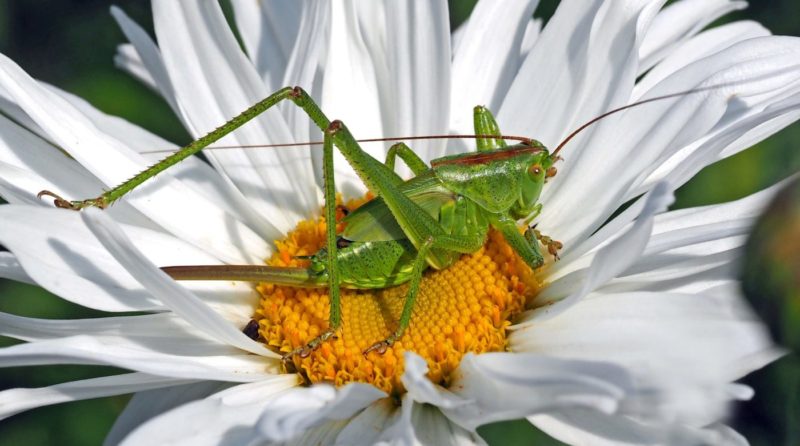
Same Crop
With this method, you plant the same thing as both trap crop and harvest crop. You plant the trap crop first so that it attracts the pests, and then the harvest crop a month or so later. This way, the pests are attracted to the fruiting trap crop before the harvest crop fruits.
When you’re ready, you can remove the trap crop along with the pests, or you can spray pesticides on the trap crop to kill the bugs. This leaves the harvest crop chemical and pest free while still giving you a conventional crop.
Different Crop
This is my preferred method. With this method, you plant one type of plant for your harvest crop and another type that is more attractive to pests. Once the pests go to your trap crop, you can spray them with pesticides or pull the crop and toss the plants (and pests).
Trap Crop Plants and the Pests They Repel
Mustard
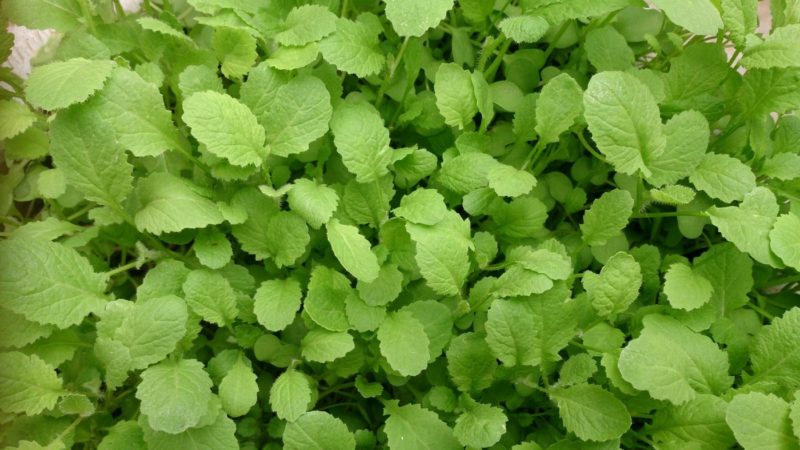
Mustard is a multi-use trap crop. Obviously, you can consume it – this spicy green is super healthy. You can also dig it into the soil to add nitrogen. On to of that, it’s attractive to a number of pests.
Plant mustard around the edge of your garden a foot wide to lure the pests away. Beware that you should dig the mustard in or remove it along with your pests before it seeds. Mustard is a prolific self-seeder, so you need to ensure you plant your food crop with sufficient time to produce before the mustard bolts to seed. Sow multiple plantings of mustard seven days apart to ensure a continuous supply and to enable you to remove the mustard before it seeds.

Mustard attracts harlequin bugs. Harlequin bugs are voracious eaters of broccoli, cabbage, beans, squash, corn, tomatoes, and many more vegetables. They also love mustard, so plant it around those vegetables.
Once you see a build-up of bugs, try to remove as many of them as you can by snipping off heavily infested mustard leaves. You can also use a pesticide to kill the bugs.
Marigold
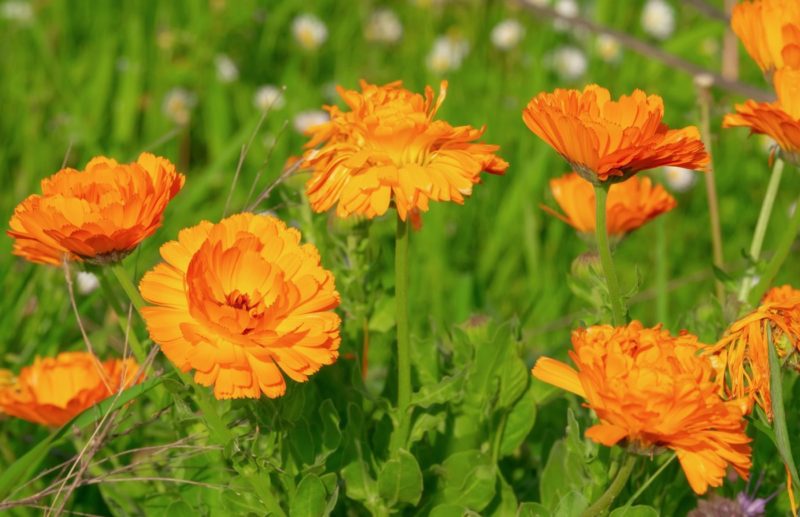
Marigolds are pretty flowers, but they’re also a useful and effective trap crop. They’re pungent and can confuse and repel flying insects.
Plant marigolds before you plant tomatoes, beans, and cucumbers. Put them in groupings seven inches away from where you plant your food crop.
Marigolds repel nematodes. These tiny worms eat the roots of food crops, and they can be downright devastating. They’re repelled by a chemical called alpha-terthienyl that marigolds release through their roots.
Dig marigolds into the soil when you’ve finished with them to take advantage of their beneficial chemicals in the garden.
Nasturtiums
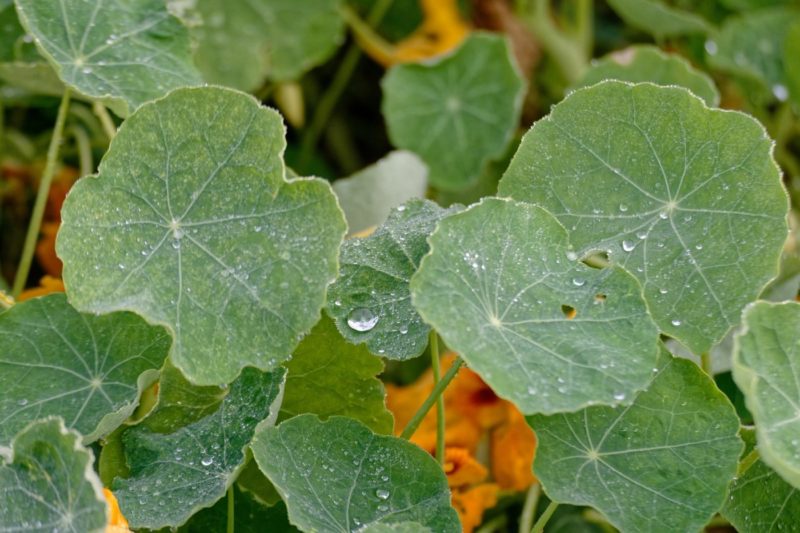
Nasturtiums are a perfect trap crop, but like mustard, it will keep growing to epic proportions. It’s a vine or spreading plant that grows along the ground, and it drops its seeds everywhere as it does. I like to plant nasturtiums in pots to prevent them from spreading too much. You still need to be aware of the seeds dropping onto the soil, though.
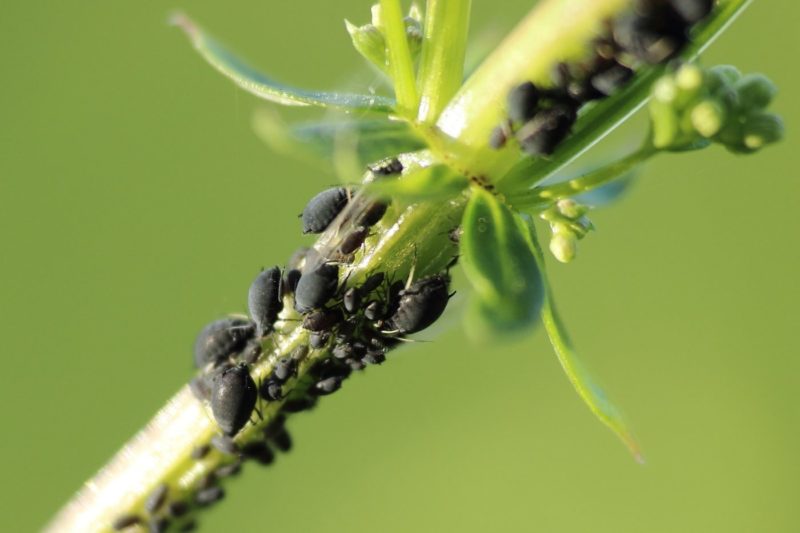
Nasturtiums are great for attracting aphids. The tiny bugs love the plant and they will congregate in groups on the big leaves.
Remove the leaves where pests are gathered, seal them in a plastic bag and dispose of it. You can also burn them if you have a fire handy. Alternatively, if your harvest crop is close to being ready, carefully remove the whole nasturtium plant and dispose of it.
Radish
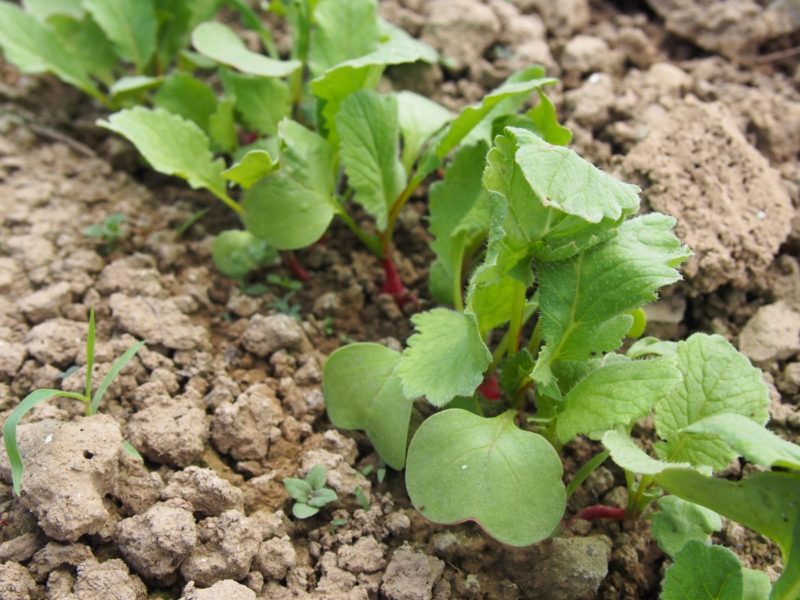
The humble radish is quick to germinate, easy to grow, and attractive to pests. This makes it perfect for planting with a harvest crop of almost any type of vegetable.
I like to take a two-pronged approach by planting a border of radishes around the garden and a scattering the seeds randomly throughout my harvest crops.
Radish are good for attracting:
- Flea Beetles
- Harlequin Bugs
- Cabbage Maggots
Nearly every vegetable you might want plant is susceptible to one of those pests. I plant the radishes about two weeks before the main harvest crop and add a few more every two weeks or so.
When the harvest crop is well established, I sprinkle diatomaceous earth between the radish and main crop and spray the radish with neem oil mixed with organic pyrethrum.
This gives time for the harvest crop to mature, and I can often get a second crop in without any trouble from pests.
Sunflower
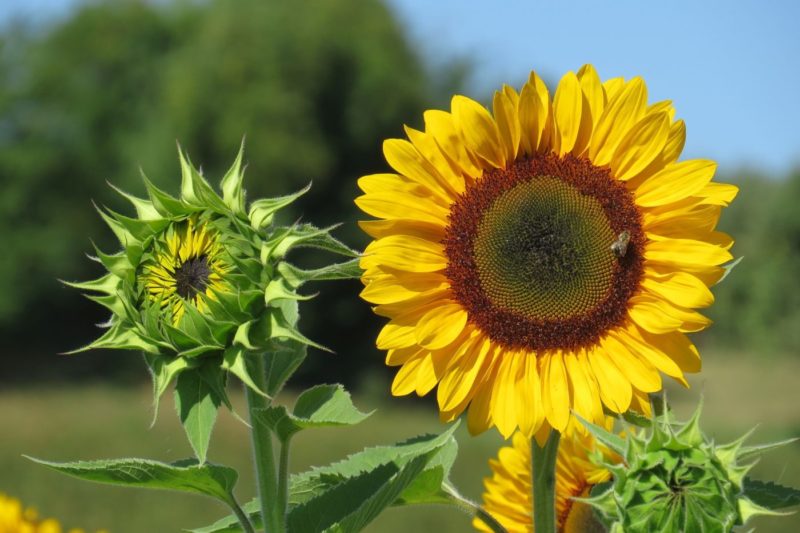
I think sunflowers look amazing, especially in rows or groups. They’re super easy to grow, and what kid doesn’t like to watch them mature?
Depending on your variety, they take 70 to 90 days to mature, so get them in early. Plant them indoors three weeks before the last frost. Plant in the garden as soon as you can.
Sunflowers attract stink bugs, which love okra and sweetcorn. I’ve had sweetcorn absolutely covered in stinkbugs before. The next year I planted sunflowers in conjunction with the corn and suddenly my corn was pest-free. I have used this method ever since then because of the success of luring the bugs away.
Once the stinkbugs have migrated to the sunflower, I either dispose of the whole flower, or I get my children to grab the stinkbugs and put them in a rubbish bag.
If I get an infestation, I use neem oil and pyrethrum mixed together and spray the sunflower. This way, I can still use the seeds for food if I want to.
Stink bugs like sunflowers so much, you don’t need to plant them right next to your harvest crop. They can be in the vicinity of the vegetable garden and you will still be successful.
Other Trap Crops
- Amaranth works well for cucumber beetle.
- Okra is ideal for attracting tomato aphids.
- Collards attract cabbage worm.
- Dill will draw the tomato hornworm.
- Chervil works nicely for slugs – and what garden can’t use that?
Caring for Trap Crops
Given that you’re generally not growing a trap crop for eating, you don’t need to be too fussy when it comes to water and fertilizer. Plant your trap crop in soil with well-rotted organic matter dug in and water along with your harvest plants.
In general, you can follow the gardening advice for your individual plant to get the most of out your trap crop.
Trap Crop Tips
If you go to the trouble of using plants to lure pests away from other crops, make sure you take note on what works in your garden and what doesn’t. I’ve found some plants such as sunflower are always lure stinkbugs away from my corn, but other plants haven’t been so successful.
If you notice some of your food crop plants attract more bugs than others, consider using that plant as a trap crop in the future. It’s all about adapting to your specific situation.
Also, be aware that you’ll want to have your trap crop ready when your insect invasion occurs. Aphids are bad in my area around May, so I need my nasturtium mature by then.
As far as ratio goes, you want about 20 percent trap crop to 80 percent food crop. Try experimenting to determine whether your trap crop works better interspersed throughout your main crop, or planted as a border.
Using trap crops is an under-utilized and effective way to control pests in the garden. If you’ve had success with specific trap crops, we’d love to hear from you. We enjoy hearing about your successes and ideas in the garden.

